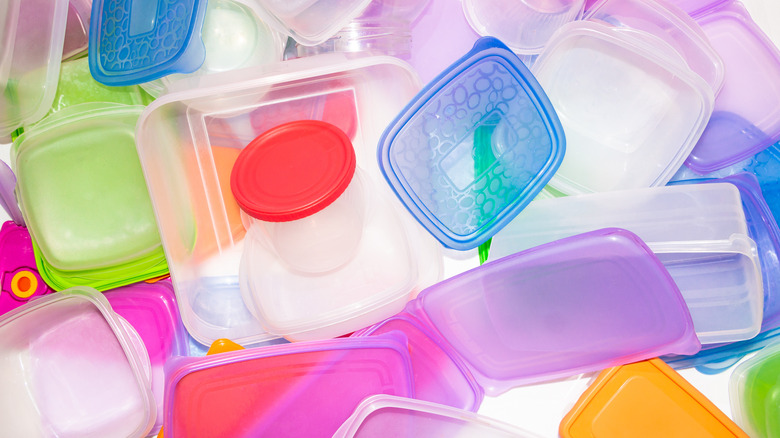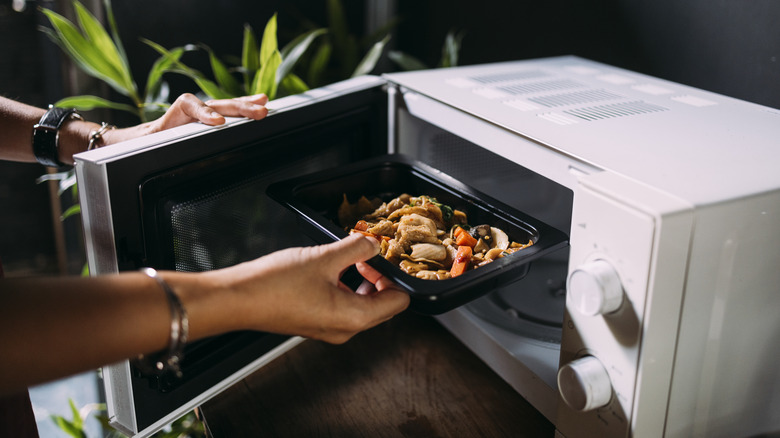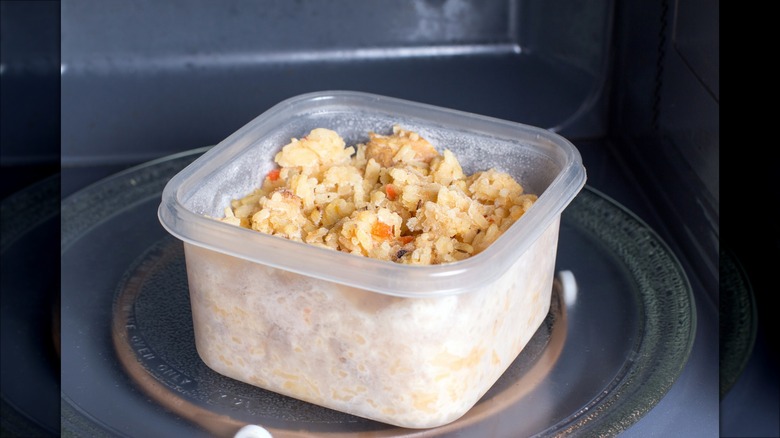Why There's No Such Thing As Microwave-Safe Plastic
We've all been there — in a rush at lunchtime, quickly microwaving leftover spaghetti in a plastic container, reassured by the "microwave-safe" label embossed on the lid. But here's the catch: the term microwave-safe is more about the container's ability to withstand heat without melting than the safety of the food inside. This realization has led many to switch to glass containers for their microwaving needs.
Since the advent of frozen dinners and Tupperware parties, plastics have been a staple in most kitchens. Given the ubiquity of plastic and its presence in everything from food storage containers to baby bottles, the question of their safety under microwave heat is increasingly pressing. A lot is happening on a chemical level when plastics make the journey from the production plant to your microwave. Gaining a deeper understanding of this process — from plastic labeling to how plastics interact with our health — can help you make smarter choices and mitigate risks the next time you're heating up leftovers.
Unpacking microwave safe plastic
The FDA plays a role in setting standards for food contact substances, including food storage containers. However, they largely rely on manufacturers to supply safety data and determine product usage, including the microwave-safe label. According to The Guardian, the safety information provided by manufacturers often doesn't include complete toxicology data, which some say is cause for concern.
To break things down a bit further, there is a seven-point numbering system that indicates what type of plastic is used in a product. The ones most relevant to the microwave discussion are numbers four through seven. Cling wrap and clear food packaging usually have the #4 label, #5 is a durable form of plastic used in drinking straws and takeout containers, #6 is typically found on styrofoam, and #7 is a category for other plastics. Some of these numbers can be more harmful than others when it comes to microwaving, and this comes down to whether they contain chemicals like BPA and phthalates.
What's the risk of microwaving plastic?
Although they won't create sparks like metal will when microwaved, phthalates and BPA can leach out of plastic when heated or damaged, which has some folks concerned. Phthalates, which make plastics flexible, are linked to hormonal disruptions, as noted in research in the journal Healthcare. However, the CDC states that further research is needed to fully understand their effects on humans. These chemicals are sometimes present in PVC plastics (marked with the #3 label) but are rare in food containers.
BPA, another common plastic additive, has been phased out of many products following the FDA's ban on its use in baby bottles. However, plastic containers with the #7 label may still contain it, especially older ones. The health effects of low-level BPA exposure in humans are not fully understood, but it has affected the reproductive systems of lab animals, prompting calls for more research. A study in the journal Environmental Health indicates that BPA alternatives may not be safer.
While avoiding microwaving plastic is ideal, sometimes it's unavoidable. The risk is higher with plastic lids, as steam and moisture can increase chemical leaching. The risks extend to other heating methods, like using plastic wrap in ovens. To minimize risks, consider reheating food in glass or ceramic instead of plastic, and replace old or damaged plastic containers, which are more prone to leaching chemicals.


